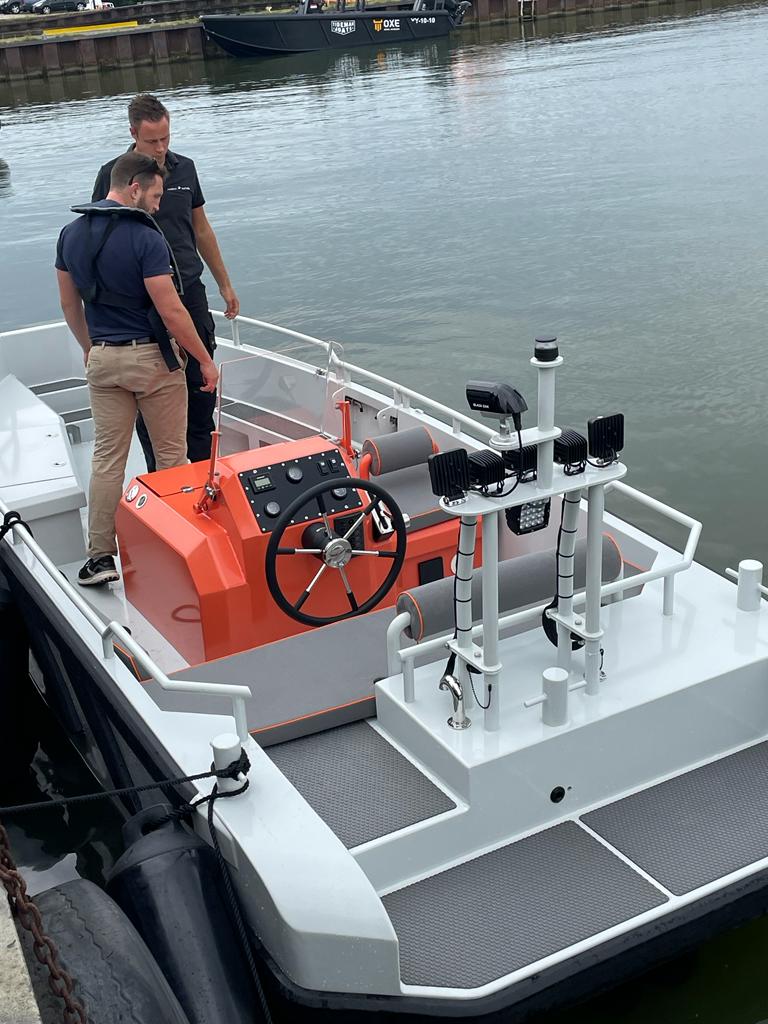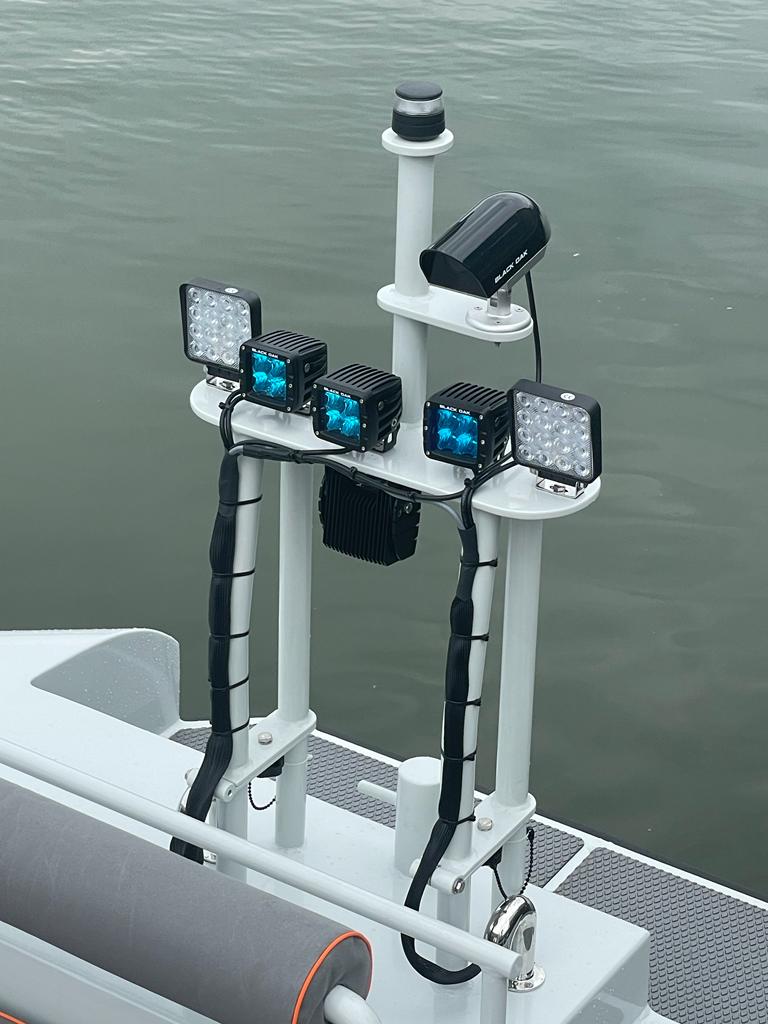Explorer Yacht Tender Design: A Closer Look at the Details
- Chris Leigh-Jones
- Aug 29, 2023
- 4 min read
Updated: Sep 14, 2023
Today, we're anchoring in a bit closer to home, focusing on a vessel that might not cover vast distances but plays a crucial role in our high-latitude sailing journeys. Fresh from our Factory Acceptance Test at the Hebbeke Shipyard, I'm excited to delve into the specifics of our Explorer Yacht Tender.
Join me as we traverse the design, functionality, and challenges of creating a tender fit for the icy realms.
Time has come to discuss our tender.
We have just visited Hebbeke Shipyard for the Factory Acceptance Test. She is 95% complete. An earlier Blog, linked HERE, covered the high-level choices for solid hull vs. RIB construction and inboard vs. outboard diesel. Let's cover the points missing from that earlier Blog.
Design criteria
These were the main design criteria.
Carrying capacity of 6 six crew. (We will bring a smaller Inflatable RIB as a backup and for beach landings.) Good carrying capacity for supplies and equipment
Single diesel fuel operation, extended range, and cruising speed.
My wife Sebrina does not like getting wet (hold that thought for later).
Navigation system to be compatible with Vanguard (Time Zero on Furuno MFD).
At least some protection for the hull from floating ice or debris.
Depth gauge fitted, GPS & AIS so that she will be visible from our Explorer Yacht. Enhanced nighttime visibility
Easy access from bow and stern and for a dive team from the water
Ice and debris
Hebbeke Shipyard makes Search And Rescue craft (SAR); these face similar issues of floating debris, especially SAR and Police craft used on inland waters. The advice of the yard is to strengthen the forefoot with a doubler placed on the skin and additional stringers internally. This adds little weight but protects from impact, especially when planning. It may get dented but is unlikely to leak.
Similarly, we added a wrap-around D Section fender to the gunwale stake (see video).
Hebbeke shortened the bow above the waterline, adding a pusher fender so we could easily hold against a dock when boarding. We also added vertical protection at the beam when alongside; the fenders will not hook up above the dock edge if hit by a wake or swell.
Engine
The engine is a 110bhp Yanmar diesel, Tier III emissions certified for EPA regulations in the USA. (It has a hot water heating option if we want to install it).
We now have single fuel capability, refilling from the ship's main fuel tanks. A Castoldi jet drive provides Fwd, Astern, and Neutral positions (neutral is the jet pointed downwards). This is the same setup as Hull No 1 HERE. A back flush clears the inlet grate in case of blockage by weeds or debris. By removing the propeller, we protect any swimmers and the potential damage to the prop. We also reduce the minimum draft from 300 to 100mm, hardly enough to get one's feet wet! Jet drives are efficient at high speeds of the planing hull and provide superb maneuverability at slow speeds. In our trial, she will turn on her length Fwd or Astern.
Diesel equates to efficiency, and we have a single 100 L fuel tank in the hull. A fuel consumption of 22 L/h gives 4.5 hours at full speed.
During the trail (six on board), we maxed at 31 knots in flat water (35mph), providing a range of around 140 NM at full speed, loaded.
Hull features
Internal deck surfaces are coated with Treadmaster (remaining floor to complete), and the deck is self-draining if swamped. The hull is designed with two substantial spray rails, providing a dry ride even in choppy water. 2 shore reels carry 100 feet of flat braided Dyneema (to be fitted near the helm) each, and an additional two by 300 feet held on Vanguard that can be transferred to sail bags. Three Sampson Posts are on the stern, one for toys and two for towing on a yoke. The video below is the nearly completed dive access door. It has a built-in ladder giving access to the tender with weights and dive gear still on (though probably not flippers!).
Visibility
For visibility at night, we added a low-light camera from Black Oak and enhanced this with three infrared LED long-distance spotlights (blue). These provide much greater illumination but do not affect the helmsman's vision. We also have two visible light LED spots (clear) illuminating the hull and stern when working at anchor or organizing dive gear. We also added Nav and deck lights. All lights came from Black Oak, I like their products for their finish and reliability. (HERE) Both instrument mast and helm screen will fold down for better stowage on deck.
Covers & instruments
A steaming cover keeps things dry when operating in inclement conditions (think Sebrina), and a full deck cover for storage. We will fit the remaining instruments and Chart Plotter (Furuno GP-1971F) on delivery to Turkey. Coms are also yet to be fitted; ICom fixed VHF unit plus personal VHF per crew. We bought two of the new ICom 94DE with AIS function for this purpose, plus some more typical units.
Specs
LOA is 5.5M, draft is 0.1M, and an all-up weight is 1300kg with a full fuel tank. Top speed about 31kt, trolling speed with minimal wake about 6kt before the bow rides up. Launching will employ a carbon fiber davit from FEM in Italy. The launch winch is either a manual or a Harken electrical two-way winch.
Further thought
If I were to make these decisions again, it would remain a toss-up between an RIB (think Highfield or Bombardier) Versus a traditional hull. Both have advantages; RIB with a D Torque diesel is about 300kg lighter. An aluminum hull's extra power (110 vs 50 hp) carrying capacity and single-fuel capability probably wins the day.
Chris Leigh-Jones
Happy to share plans for free if anyone wants to build their own. (Donate a small sum to the Royal Navy and Royal Marine's Charity if you may.)

















Comments